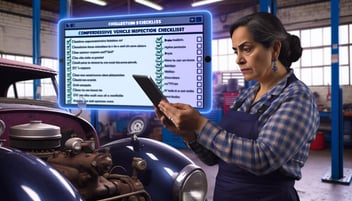Mamma Was Right About Safety
When you were little, did your mamma ever say?
-
“Don’t flick that towel, you will knock your brother’s eye out.”
-
“Eat your carrots, you’ll improve your eyesight”
-
“Money doesn’t grow on trees.”
Mama’s advice still has a tremendous amount of relevance today. Read on to learn about 3 ways investing in safety training saves you money. Except instead of taking mamma's advice we are going to another person who has left us with a lot of inspirational quotes — Benjamin Franklin.
1. An ounce of prevention is worth a pound of cure.
Never better advice. Investing in safety training before something untoward happens at your workplace is definitely the wiser path to take. This is the foundation for OSHA. When OSHA was started in 1970 its purpose has been to assure safe and healthful working conditions for working men and women by setting and enforcing standards and by providing training, outreach, education, and assistance.
Heed the stats: Since OSHA’s formation, workplace deaths and reported occupational injuries have dropped by more than 60 percent. Establishing a workplace and injury prevention program makes a real difference in addressing the 5,147 workers were killed on the job in 2017. Injuries and deaths are costly, address these risks head-on before they occur.
It's equally important to know that in 2019 OSHA fines have increased. By tackling your industry’s area of concern, you will definitely be practicing cost avoidance!
2. An investment in knowledge pays the best interest.
Employee education and training all factor into safety. It’s your responsibility to keep your team educated and engaged in understanding the daily risks that they each face. This includes a strong and structured onboarding/orientation program, ongoing, frequent and scheduled topics and refreshers.
Your investment in their training should start with and be consistent with the areas that are the top 10 most frequently “cited” by OSHA. By keeping your team safe and on the job, you are avoiding direct costs of loss of injury, but even more pronounced is the indirect cost. According to the American Society of Safety Engineers (ASSE) puts the ratio of indirect to direct costs anywhere from 1:1 to 20:1.
When your employees get injured, you need to hire and train replacement workers. Projections for these costs can break your budget. Estimates put this at 100%-300% of base salary! This additional expense costs you money, to say nothing of the lost productivity! Don’t get caught in the replacement mill.
3. Don't put off until tomorrow what you can do today.
The key to addressing safety is to start now. Thinking about addressing injury and illness prevention won’t keep them safe on the job. By putting off what you need to do, you are needlessly extending your risk of occurrence and thereby increasing your financial risk.
There is an absolute business case for economics for a health and safety program/culture.
Injuries and deaths are costly, address these risks head-on before they occur.
Your mamma and Ben had some pretty strong words to say when you were growing up...pay that forward by investing in your workforce for safety. Every dollar spent in safety training saves your money in the long run. You will be addressed lowering workers' compensation costs and medical expenses, avoiding OSHA penalties, and reducing costs to train replacement employees and conduct accident investigations.






Leave a Comment